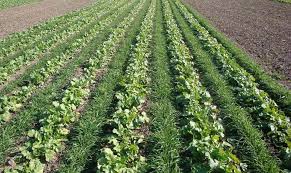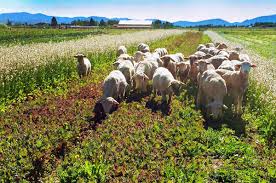
Sustainable Agriculture Practices
- Sustain Afric
- Aug 13, 2021
- 2 min read
Over decades of science and practice, several key sustainable farming practices have emerged which include
#1 Rotating crops and embracing diversity.
Planting a variety of crops can have many benefits, including healthier soil and improved pest control. Crop diversity practices include intercropping (growing a mix of crops in the same area) and complex multi-year crop rotations. #2 Planting cover crops.
Cover crops, like clover or hairy vetch, are planted during off-season times when soils might otherwise be left bare. These crops protect and build soil health by preventing erosion, replenishing soil nutrients, and keeping weeds in check, reducing the need for herbicides.
#3 Reducing or eliminating tillage. Traditional plowing (tillage) prepares fields for planting and prevents weed problems, but can cause a lot of soil loss. No-till or reduced till methods, which involve inserting seeds directly into undisturbed soil, can reduce erosion and improve soil health. #4 Applying integrated pest management (IPM).
A range of methods, including mechanical and biological controls, can be applied systematically to keep pest populations under control while minimizing use of chemical pesticides. #5 Integrating livestock and crops.
Industrial agriculture tends to keep plant and animal production separate, with animals living far from the areas where their feed is produced, and crops growing far away from abundant manure fertilizers. A growing body of evidence shows that a smart integration of crop and animal production can be a recipe for more efficient, profitable farms.
#6 Adopting agroforestry practices.
By mixing trees or shrubs into their operations, farmers can provide shade and shelter to protect plants, animals, and water resources, while also potentially offering additional income. #7 Managing whole systems and landscapes.
Sustainable farms treat uncultivated or less intensively cultivated areas, such as riparian buffers or prairie strips, as integral to the farm—valued for their role in controlling erosion, reducing nutrient runoff, and supporting pollinators and other biodiversity. A key theme connecting many of these practices is diversification. “Keep it simple” is good advice in many situations, but when it comes to agriculture, the most sustainable and productive systems are more diverse and complex—like nature itself.
Keep it simple and enjoy diversification






Comments